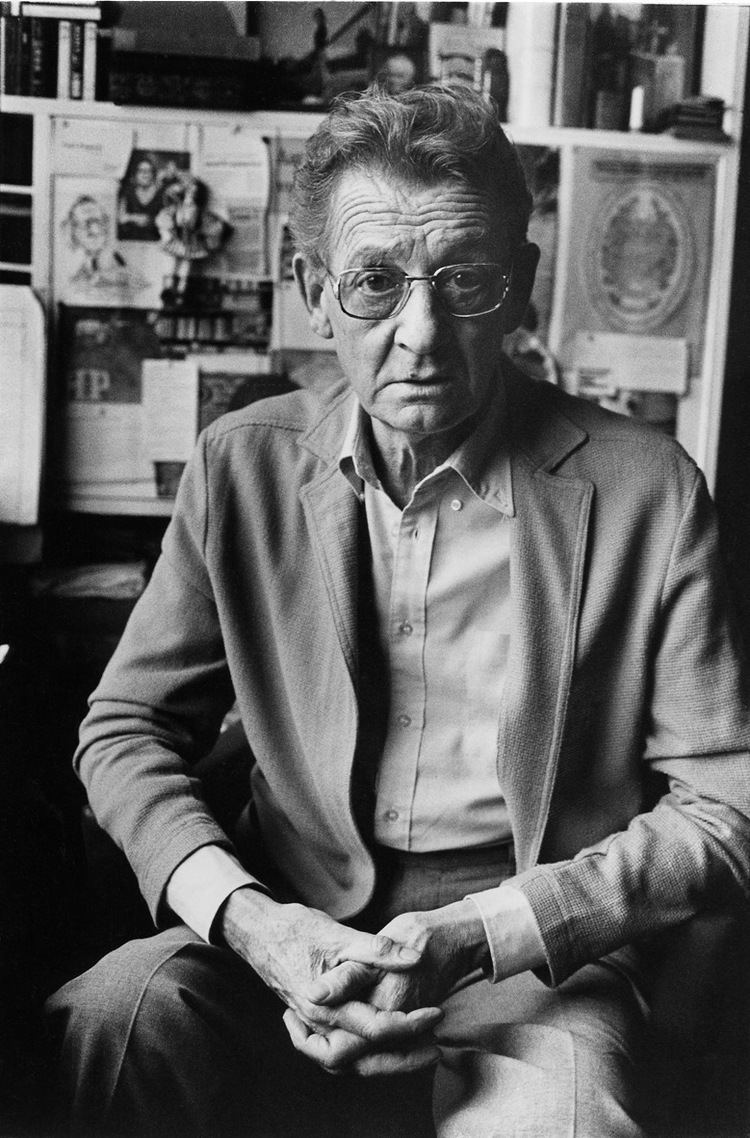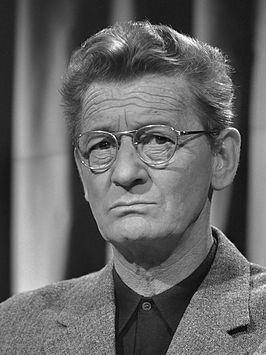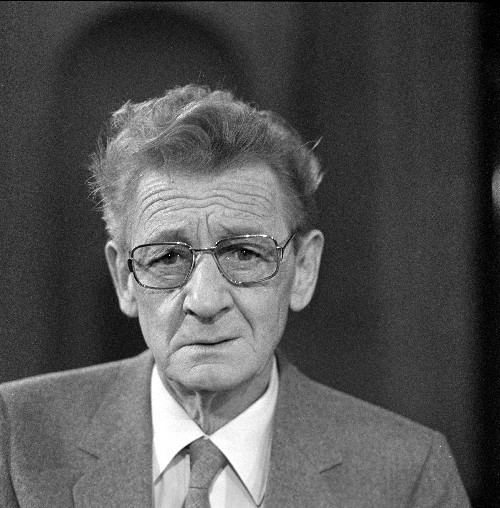Name Simon Carmiggelt Signature | Nationality Dutch Role Writer | |
 | ||
Pen name Kronkel, Karel Bralleput. Spouse Tiny Carmiggelt (m. 1939–1987) Books I'm Just Kidding: More of a Dutchman's Slight Adventures Children Frank Carmiggelt, Marianne Carmiggelt Movies The Human Dutch, The Voice of the Water, Zoo Similar People Renate Rubinstein, Bert Haanstra, Sylvia Witteman, Peter van Straaten, Gerd de Ley | ||
Simon carmiggelt niks
Simon Carmiggelt (7 October 1913 – 30 November 1987) was a Dutch writer who became a well known public figure in the Netherlands because of his daily newspaper columns and his television appearances.
Contents

Simon carmiggelt hoge bomen avro 2005
Biography

Simon Johannes Carmiggelt was born on 7 October 1913 in The Hague, the second son of Herman Carmiggelt and Adriana Bik. He had one older brother, Jan (Johannes Simon). Simon did not turn out to be a very bright student and he left secondary school in 1929. He enjoyed working as an editor for the school paper though, and he was determined to become a journalist.

After various editorial jobs, he became a reporter for the socialist newspaper Het Volk (The People). Later on he worked for the same paper as a drama critic. He also wrote short columns about daily life in The Hague, which he called Kleinigheden (Trifles). In 1939 Simon married Tiny de Goey. A year later she gave birth to a daughter, Marianne. In the same year the first collection of Kleinigheden was published, named Vijftig dwaasheden (Fifty follies).
When the Germans invaded the Netherlands in 1940 and Het Volk was taken over and censored, Carmiggelt resigned from the paper. During the war he had all sorts of small jobs, but he secretly got in touch with the Dutch resistance and worked for the underground newspaper Het Parool. He was responsible for the lay-out and printing of the paper. He also wrote a few stories for Het Parool.
In 1943 Simon's brother Jan was arrested by the Germans for aiding persons in hiding. He was taken to Herzogenbusch concentration camp, where he died of exhaustion on September 26, 1943. Jan's death was to change the rest of Simon's life; he would never fully overcome the trauma it caused.
After the war he again started to write columns for Het Parool. He signed them as 'Kronkel' (Twist, Kink). His Kronkels became very famous for their melancholic, sometimes sombre tone and the ironic use of formal language. Many columns were about unsuccessful, disillusioned people in cafes and bars (often in Amsterdam, where he then lived), who told the writer about their lives. But Carmiggelt also wrote about his children and later his grandchildren, his cats and other small events in his life. His work became very popular and he received various Dutch literary prizes. Together with the Dutch Indo author and essayist Tjalie Robinson he is credited with establishing a whole new genre in Dutch literature that found successors like Rudy Kousbroek.
In 1977 Carmiggelt started a secret liaison with the author Renate Rubinstein. She wrote a book about this, titled Mijn beter ik (My better self), which was published when both she and Simon had died. Simon Carmiggelt's last Kronkel was published in 1983. On 30 November 1987 he died of a heart attack. A year after his death, a statue of Carmiggelt (made by Kees Verkade) was placed near his former house in Amsterdam and one of him and his wife on a park bench near his summer house in De Steeg (Rheden). This last statue was stolen in the weekend of 21 January 2012. It was retrieved on 25 January, sawn into many pieces. Three men have been arrested in relation to this event; the motive is still unclear. The statue was pieced together by the sculptor Wik Kuijl and then re-unveiled in its original site on January 23, 2013.
